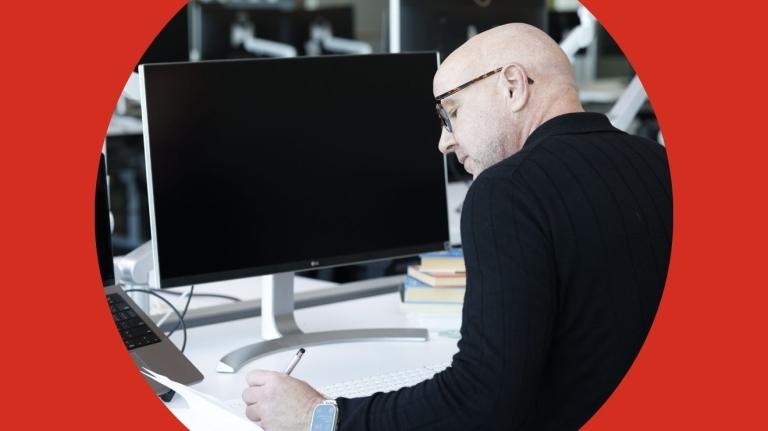In a world that is constantly evolving, the need for new or elevated skills is in high demand for many professions. While many working professionals look to level up, students are also looking to expand their learning outcomes, improving their success in today's workforce. With the evolution of AI and other technologies, the workforce continues to shift, producing a demand for agile thinking and skill-building. In response, higher education institutions are investing in upskilling learning opportunities and finding ways to support professionals returning to academics. Prioritising competency-based and skill-based learning prepares learners to meet shifting labour demands and achieve their goals.
What is Upskilling and Reskilling?
Some students want to build on their current skill set, while other learners want to develop an entirely new set of competencies. Upskilling expands an existing skill set; reskilling is acquiring skills outside of the current skill set. Although some workspaces offer skill-building opportunities, professionals can independently seek educational opportunities to expand or transfer skills. Current students can also strengthen their career prospects by developing multiple skills before entering the workforce.
Why students are looking to upskill and reskill:

Today’s students are approaching their studies in a non-traditional and non-linear manner through techniques such as upskilling and reskilling. In an effort to receive the best return on their educational investment, students are not afraid to pivot or develop additional skills when needed. Working professionals are also looking to refine their skills by attaining additional certifications or badges.
Upskilling VS Reskilling
To navigate the world of upskilling and reskilling effectively, it's crucial to have a clear understanding of the distinctions between these two terms and their significance in career development.
Upskilling refers to the process of building upon an existing skill set. It involves enhancing current skills within a similar industry. For example, an IT professional might upskill by learning a new programming language to stay competitive in their field. Upskilling is about staying relevant and advancing within one's current career path. It is often characterised by incremental skill enhancements that align with an individual's current job or profession.
Reskilling, on the other hand, entails acquiring an entirely new set of competencies that may be unrelated to one's current skill set or profession. It represents a shift in career direction or the pursuit of skills outside of an individual's existing skill set. An example of reskilling would be a teacher transitioning into an HR role, necessitating the acquisition of human resource and training skills. Reskilling requires preparing for career changes or addressing skill gaps that might hinder one's employability in their current field.
Understanding these distinctions is essential because they guide individuals in making informed decisions about their career paths and learning journeys. While upskilling helps individuals advance within their current professions, reskilling empowers them to explore new career horizons. Both approaches are valuable, and knowing when and how to apply them can significantly impact one's career success in an ever-evolving job market.
Skill-based Instruction with Digital Badging
Students and professionals are encouraged to celebrate each achievement as they continue their learning journeys. With digital badging, learners can celebrate each skill-building milestone. Endorsing each skill before moving on to the next skill ensures the learner is capable and has mastered a specific set of competencies, all while showcasing those competencies for potential employers.
“Traditionally, higher education has been linear and binary. Once you enter the path to a degree, you either graduate or you don't. With credentialing, we're able to break the traditional two-year or four-year degree down into its component skills and issue badges around individual courses or certificates or around a bundled set of courses to students as they master these skills. That way, even if they don't achieve a full degree, they still have proof of skills they've developed to show to potential employers.” - Ryan Lufkin, Vice President of Global Strategy at Instructure
Understanding the growing need for skill-based instruction, institutions are applying nontraditional techniques such as digital badging or micro-credentials to provide stackable learning pathways. Digital badging facilitates a competency-based approach by driving engagement, validating skills & personal achievement, and demonstrating value through student learning outcomes. Through digital badging, skill-based credential systems reward students as they learn and make academic achievements. Educators and students can track their progress, celebrating the learning journey, not just the end results.
Upskilling for Educators: Professional Development and Training
Good educators are constantly learning. Over the years, teachers and faculty have integrated new learning strategies and tech into their courses as the edtech landscape evolves. They continue to demonstrate the importance of lifelong learning even in their careers.
“Preparing students for a career path after graduation, whether they are traditional students, part-time students, or mid-career, is still the primary concern of students, faculty, and administrators. However, administrators and students agree that this is the area where institutions struggle most.” - 2022 State Of Student Success & Engagement in Higher Education
Investing in faculty skill-building and professional development benefits both educators and students. As higher education changes, it's important to keep educators up-to-date with effective instructional practices, strategies, and ideologies. To ensure proper implementation of instructional methods, faculty need opportunities to build on prior knowledge and develop new skills. With advancing technology integration in higher ed, educators are encouraged to navigate digital tools and LMS that promote academic success. Digital fluency is necessary to provide flexible, student-centric, and tech-enhanced learning.
Student Upskilling and Reskilling: Succeeding in a Competitive Workforce
Entering the workforce can be daunting for upcoming graduates. In support, institutions are providing their students with the skills and resources needed to be successful in their upcoming roles. One way that institutions are providing skills-based learning opportunities for students is through partnerships with local companies for on-the-job learning. Whether working at FedEx while studying at the University of Memphis or learning at the University of San Antonio while working at Goodwill, institutions across the country are creating meaningful opportunities for skills-based learning, upskilling, and reskilling.
"By partnering with universities and using a common, shared language, companies are able to create a dedicated funnel of new employees with skills that directly map to those they need, reducing onboarding time and the need for supplementary on-the-job training. Additionally, in our quickly evolving tech economy, these same partnerships enable upskilling and reskilling of employees throughout their careers," - Ryan Lufkin, Vice President of Global Strategy at Instructure
Students are looking for learning opportunities that provide portfolio and skill-building experiences that are verifiable to prospective employers. With opportunities for real-world learning, students are stacking credentials in their desired fields to have a competitive edge in the workforce.
Employee Upskilling and Reskilling: Succeeding in the Workforce
Today’s employees can benefit from on-the-job learning experiences and investment in professional development. In response, employers are offering training and advancement opportunities, providing both vertical and horizontal skill-building pathways. This means employees have more choice in how they choose to progress in their careers. Some employees decide to cross-learn and potentially transition into a new department. Others prefer to move up the traditional corporate lattice. No matter the career path, when maximising upskilling and reskilling opportunities, each employee has the ability to build skills and succeed in their career.
Training resources can be offered through mentorship, partnering with universities, and using an LMS to conduct courses that offer certification or badging on specific topics. With innovative opportunities, the job demands of the future can be filled with skilled workers from entry-level to middle management and beyond.
See how an LMS can be used to provide upskilling and reskilling resources to students and professionals.
Edtech Makes Skill-Based Learning Equitable
“Student success today requires the availability of technology resources, as well as engaging content and instruction from technology-proficient faculty.”- 2022 State Of Student Success & Engagement in Higher Education
Advancements in education paired with evolving technology have increased educational opportunities and accessibility. With access to online learning, hyflex teaching, and digital tools supporting all learning modalities, students can now easily obtain additional education. Institutions also benefit from digital tools used to track, retain, train, and support students.
Online learning offered through an established learning management system provides quality and enhanced learning experiences. An LMS organises learning tools, facilitates communication between students & educators, and tracks student performance & progress. Upskilling and reskilling can be challenging; however, an LMS can make the academic journey manageable.
In addition to a user-friendly LMS, a digital badging and credentialing solution can map pathways for learning that take learners from discovery to mastery of skills. Institutions across America are using Canvas LMS and Canvas Credentials to offer upskilling and reskilling opportunities to students, workers, and their communities. View Canvas LMS + Canvas Credentials Case Studies:
- Chaffey College: Customising a CBE Vision at Scale
- Jones College: Increasing Workforce Opportunities with Canvas Credentials
- Louisiana State University: Enable Continued Learning with Digital Credentialing
- Upskill San Antonio: Fighting Poverty and Changing Lives
See other ways Canvas LMS is being used to provide educational opportunities and skill-based learning worldwide.
It’s clear that a shift in upskilling and reskilling is imperative to match the labor demand of the coming era. Whether talking about students who have yet to enter the workforce, adult learners who are enrolling in courses to learn new skills, educators who are exploring professional development, or employees who are looking to up or reskill, innovative opportunities to learn skills are the way of the future.
Using Digital Tools for Skill-Building
Setting up future workers for success is a tremendous responsibility. Help students reach learning milestones through micro-credentials and prepare to transfer their skills to the workforce.
Related Content
 BG-Canvas-2.jpg
BG-Canvas-2.jpgBlogs
 igniteai_blog_image.png
igniteai_blog_image.pngBlogs
 australia_and_new_zealand_state_of_higher_ed_2025_lifelong_learning_mini_report_-_thumbnail_1.png
australia_and_new_zealand_state_of_higher_ed_2025_lifelong_learning_mini_report_-_thumbnail_1.pngBlogs
